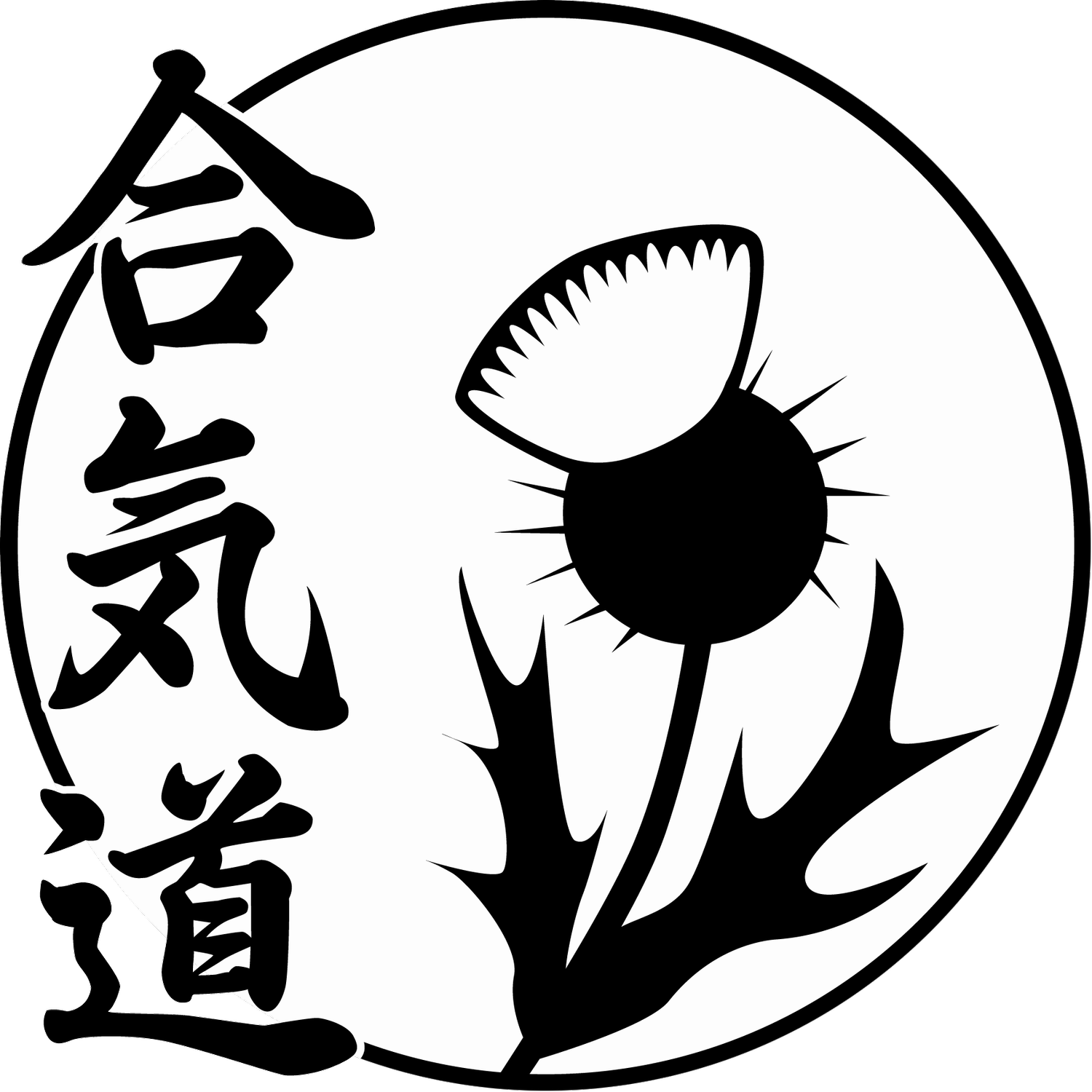Aikido is a modern Japanese martial art (Budo) that was developed by Morihei Ueshiba (O-Sensei)
合気道
Aikido means "The way of unity of spirit"
In Aikido we seek to reach a non-destructive resolution from conflict; in day-to-day practise we do this by using the energy of an attack and pinning or throwing our partner(s) in a safe and controlled manner; Aikido is not about fighting. There is no sparring; there are no competitions, medals or prizes; Aikido is for self-defence and self-development.
The techniques and principles of Aikido involve using your partner's energy augmented with your own so that two separate individuals become one.
You do not need to be physically powerful to effectively practise Aikido. You will develop strength as you train, but it is not the typical image of strength and it has little to do with muscular strength. In Aikido, this strength is called "Kokyu ryoku" or "breath power" and is a physical manifestation of ki which arises from a coordinated mind, body and spirit. In order to develop our ki, Aikido practise involves coordination / relaxation techniques; callisthenics; breathing exercises; weapons exercises; falling exercises and partnered practise.
O-Sensei
O-Sensei was born in Tanabe on December 14th 1883; the only son of a local politician, he was a sickly child and was encouraged in physical pursuits such as swimming and sumo by his father. He would later serve in the army and fight in the Russo-Japanese war, all the while pursuing his studies of the martial arts such as Judo, Sumo, Shinkage Ryu and a variety of different styles of Jiujutsu; eventually, he became a prospector in the northern Japanese island of Hokkaido. It was there that he first encountered the legendary Sokaku Takeda; a renowned martial artist who travelled Japan teaching his own style of JiuJutsu called Daito Ryu Aikijiujutsu. Impressed by Takeda's obvious mastery, Ueshiba became his student.
Some time later Ueshiba encountered a religious leader named Onisaburo Deguchi of the Omoto Kyo sect, it was he who encouraged Ueshiba to begin teaching the martial arts he had learned, and to teach them as a spiritual pursuit rather than a way to be only physically stronger. After a time Ueshiba became a well known martial arts teacher and he named his art "Aikido" in 1942.
He eventually retired to live and teach in the small country town of Iwama leaving his only son Kisshomaru in charge of running the organisation he had set up to spread the teaching of Aikido throughout the world, this organisation was called the Aikikai and is now headed by O-Sensei's grandson Moriteru Ueshiba who is given the title of Doshu.
O-Sensei passed away on the 26th of April 1969 leaving his son in charge of the Aikikai, however, in the years directly after World War II there had been chaos in the then occupied Japan and teaching Aikido was difficult at best (martial arts were banned by the occupying forces), during this time a few of O-Sensei's more senior students began teaching independently of the Aikikai, this would eventually lead to them developing into many new styles of Aikido each espousing the particular teacher's philosophy.
Examples of such styles are: Shin Shin Toitsu Aikido (Tohei Sensei); Yoshinkan Aikido (Shioda Sensei); Shodokan Aikido (Tomiki Sensei); Iwama Ryu Aikido (Saito Sensei). Each style has their own unique qualities but ultimately, they are all different forms of the same art and all trace their lineage back to O-Sensei.
